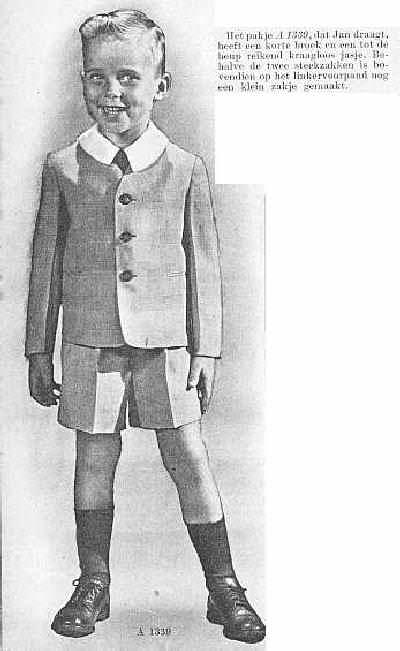
Figure 1.--The Dutch woman's magazine "Libelle" offered the pattern for this lapelless Eton suit in a 1949 issue. Notice the Eton-styled collar. |

|
We have noted these Eton suits for younger boys being primarily worn in the United States. This may in part be because our primary sources are American, but we in fact have seen fewer European boys wearing this style of suit. This is not to say, however, that it was only worn in America and we have occassionally seen European boys wearing this style, especially after World War II in the 1950s and 60s. Our information here is very limited and we have just begun to develop information on the extent to which these suits were worn in other countries. Hopefully our European readers will provide some insights here. We also see Japanese boys wearing these juvenile Eton suits.
Croatia had a higly varied political environment during the 20th century, the time for which the junior Eton suits were a popular style. It was part of royal Yugoslavia and then Communist Yugoslavia. We do not have much information on Croatian fasions. We believe that it was similar to Yugoslavia in general. Germany was a major fashion influence befoire World War II. After the War, Italy was more of an influence, especially after the break with Stalin and the Soviet Union (1959). We note a kindergarten boy wearing a smart junior Eton suit in 1959. We have no idea how common these suits were in Croatia.
We have not found many examples of English boys wearing the junior Eton suits that are so popular for yonger American boys. Because we have a fairly substanyial English archive, we think that our failure to find many exampples is a fairly accurate indicator of prevalence. We are not sure why the style never caught on in England. Boys seem more likely to wear regular suits or school uniform styles. Given that the Eton suit amd collar originated in England, ome might have assumed that the junior Eton suits would be a popuolar style in England. But we just do not see many in the photiographic record. Even in wedding and other formal wedding portarits, we do not seee many examples. England is not unique, we do not see many of these suits in other countries as well.
We have seen some of these juvenile Eton suits in Italy. All of the Italian examples we have found come after World War II, mostly in the 1950s and 60s. Some are mock-double breasted styles, something you do not see so commonly in America. We are not sure how common they were. Our Italian archive compared to other major European countries is relatively limited. So it isifficult to say much avout prevalence. Nor do we have a good fix on age trends yet.
We also see Japanese boys wearing these juvenile Eton suits. It seems to be astyle associated with school wear. Japabese boys commonly were dressed up in new suits when they began school. Eton suits were a popular style.
The Dutch woman's magazine Libelle offered the pattern for this lapelless Eton suit in a 1949 issue. Notice the Eton-styled collar (figure 1). We have vnot noticed many Dutch boys wearing these suits, butv our Dutch archive is still fiarly limited.
After World War I we see younger American boys wearing juveile Eton suits. They differed from the classic 19th century Eton suit in a number of ways. It was a suit with a short lapeless jacket usually with suspender short pants. It was often paired with peaked caps and matching knee socks. Footwear varied, but saddle shoes were often a popular choice. We note them being worn both with and without neckwear.We believe that the juvenile Eton suits are primarily an American style. We have noted them extensively worn in America since the 1920s. We have noted these Eton suits for younger boys being primarily worn in the United States. This may in part be because our primary sources are American, but we in fact have seen fewer European boys wearing this style of suit. We have noted them in other countries, but not nearly as commonly. This is not to say, however, that it was only worn in America and we have occassionally seen European boys wearing this style, especially after World War II in the 1950s and 60s. Our information here is very limited and we have just begun to develop information on the extent to which these suits were worn in other countries. At the present time the only actual image we have acquired is a Dutch image from a 1950 magazine, but we know these suits have been worn in other countries as well. Hopefully our European readers will provide some insights here. We have noted English girls wearing the jackets as part of a school uniform. Here we have only noted girls wearing them as part of a school uniform, but never boys. They were less commonly worn in the 1970s, but they were a popular choice for younger boys participating in formal events like weddings.
Navigate the Boys' Historical Clothing Web Eton pages:
[Return to the Main Amerian Eton suit page]
[Return to the Main Eton style page]
[Eton school uniform]
[Classic Eton suit]
[Eton collar]
[Eton kilt]
[American Eton suits]
Navigate the Boys' Historical Clothing Web Site:
[Return to the Main American-style juvenile Eton suit page]
[Introduction]
[Activities]
[Biographies]
[Chronology]
[Clothing styles]
[Countries]
[Bibliographies]
[Contributions]
[Essays]
[FAQs]
[Glossaries]
[Images]
[Links]
[Registration]
[Tools]
[Boys' Clothing Home]
